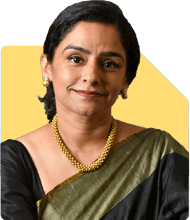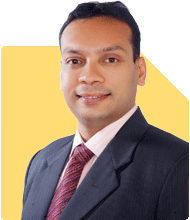48 Year Old Jobless Man with 20 Years of Experience Seeks Job in Developed Country: How to Succeed?
Pradeep Pramanik | Answer |Ask -Follow
Career And Placement Consultant - Answered on Sep 04, 2024
Pradeep, who hails from Bhagalpur in Bihar, has worked in the pharmaceutical industry for 15 years in sales, marketing, training and product management roles in companies like Lupin Pharmaceuticals, Elder Pharmaceuticals and Ranbaxy Laboratories.
During his tenure in the pharma industry, he has worked in different states including Bihar, Jharkhand, Andhra Pradesh, Telangana, Karnataka, Maharashtra, Tamil Nadu and West Bengal.
In 1998, he launched Fast Track Career Consultants with the aim of helping youngsters find jobs through the right career counselling, training and placement services.
They also offer HR analysis and appraisal services.
Over the years, he has been invited by management and engineering institutions to discuss education and employment policies, entrepreneurship, soft skills and emerging careers in India.
He has published four books on career counselling and contributed articles to print publications.... more

I am 48 y old I lost my job last 16 month ,I have 20yr experience in MNC companies in Consumer durables- Channel Sales department ,now I am job less I want to start my business of Air-conditioner showroom, but still looking for a job for my family survival , searching sincerely but not getting any, so I am open to go to out of India for any category job, pls let me know how to I get job in any developed country in any job profile?
You need to think with cool mind You want to enter into FMCD retail dealership showroom which is quite risky . Neither going to abroad for job with regard to your sales wont be possible and many developed countries in changed
scenario don't issue visa to stay and look for job unless you have very exclusive work experience or qualification. However you may try for Australia/ Canada / Ireland / UK etc. I will suggest pl. get into sales job here in India , which won't be difficult to get.
You may like to see similar questions and answers below
Mayank Rautela | Answer |Ask -Follow
HR Expert - Answered on Dec 23, 2021
Shital Kakkar Mehra | Answer |Ask -Follow
CEO Coach, Business Communication Expert - Answered on Feb 09, 2023
Krishna Kumar | Answer |Ask -Follow
Workplace Expert - Answered on Jul 26, 2024
Prof Suvasish Mukhopadhyay | Answer |Ask -Follow
Career Counsellor - Answered on Nov 12, 2024
Ramalingam Kalirajan |10906 Answers |Ask -Follow
Mutual Funds, Financial Planning Expert - Answered on Dec 19, 2025
Nayagam P P |10859 Answers |Ask -Follow
Career Counsellor - Answered on Dec 19, 2025
Ramalingam Kalirajan |10906 Answers |Ask -Follow
Mutual Funds, Financial Planning Expert - Answered on Dec 19, 2025
Ramalingam Kalirajan |10906 Answers |Ask -Follow
Mutual Funds, Financial Planning Expert - Answered on Dec 19, 2025
Ramalingam Kalirajan |10906 Answers |Ask -Follow
Mutual Funds, Financial Planning Expert - Answered on Dec 19, 2025
Radheshyam Zanwar |6751 Answers |Ask -Follow
MHT-CET, IIT-JEE, NEET-UG Expert - Answered on Dec 19, 2025
Radheshyam Zanwar |6751 Answers |Ask -Follow
MHT-CET, IIT-JEE, NEET-UG Expert - Answered on Dec 19, 2025
Samraat Jadhav |2514 Answers |Ask -Follow
Stock Market Expert - Answered on Dec 18, 2025
Reetika Sharma |432 Answers |Ask -Follow
Financial Planner, MF and Insurance Expert - Answered on Dec 18, 2025
Reetika Sharma |432 Answers |Ask -Follow
Financial Planner, MF and Insurance Expert - Answered on Dec 18, 2025




























